In November 2021, confined to bed with Covid, I found myself immersed in the magical world of Harry Potter, revisiting all eight movies. Days blurred into a cycle of Hogwarts spells, geography quizzes, and health updates to my worried mother. By day six, I could identify almost any country by its shape, a strange side effect of feverish boredom. The abstract nature of borders, something I intellectually understood, became viscerally real as I traced the lines separating nations on digital maps. The question posed by the protagonist in Nagisa Oshima’s Death by Hanging resonated deeply: What is a nation? Show me one! I don’t want to be killed by an abstraction.
It was during this surreal, fever-dream state that an Instagram DM arrived from Parker Ito, proposing a collaborative show. Lost in thoughts of Balkan borders and Hogwarts, I responded with a bewildered, ‘am I hallucinating lol.’ Despite our then-casual acquaintance, I was intrigued and readily agreed.
My Harry Potter phase was a distant memory from middle school, a companion during countless hospital visits for medical procedures. The books were a source of courage before daunting medical interventions. Those familiar with the disorienting experience of medical examinations, the blurry images and complex terminology, might develop a unique appreciation for the abstract. Trusting in interpretations, no matter how vague, becomes a necessity.
Fast forward to March, and my attempt to quit smoking led me to a hypnosis app. The goal was to quit before the upcoming show, a conceptual gesture, perhaps. Parker, notably, dislikes smoking. His preferences are strong, his ambivalence almost brutal. Even a casual dismissal from him carries weight. I believe truly impactful artists often immerse themselves in their tastes, allowing their unique perspective to intensify. Parker embodies this, a quality I admire. I, on the other hand, tend to be overly agreeable.
The hypnosis app, while not successful in curbing my smoking, became a frequent indulgence. A mechanical voice guided me into relaxation, counting down, each number pulling me deeper. Strangely, I consistently visualized the Gringotts Wizarding Bank, riding those precarious mine carts through the winding tunnels, descending into the hidden vaults. The antisemitic goblins were absent, replaced by benevolent, shadowy feminine figures. The cart stopped at a small door, revealing a dimly lit, inviting bedroom. I imagined sinking into the warmth of the four-poster bed, a sanctuary from the world, a place unreachable. The spectral women instructed me to simply rest and sleep. It was bliss. ‘Omg,’ I texted my friend Tica after reluctantly returning to reality, ‘The sunken place is real.’ It’s a space where you can truly escape, much like immersing yourself in a captivating story, perhaps even a fairytale like Barbie and the 12 Dancing Princesses, where a hidden world offers respite from the mundane. For those seeking an escape, you might even Watch 12 Dancing Princesses as a form of gentle hypnosis and imaginative retreat.
Back in the tangible world, my reality is a studio apartment on the ground floor of a two-story house. Alex and Sarah, my upstairs neighbors, are incredibly kind, and our growing friendship is a genuine joy. Our paths often cross in the yard, leading to brief, pleasant conversations. Sarah and I have developed a habit of ‘nightcaps,’ sharing cigarettes on the stairs, our talks ranging from everything to anything. A talented audio engineer and musician, also a San Francisco native, Sarah seemed like the perfect collaborator to create a sound piece for the Climate Control show. I envisioned creating video to accompany her music, scoring in reverse.
Sarah delivered her evocative composition in early May. By mid-June, just weeks before the show, I was still unsure of what to film. Working on turmeric prints in the yard, preparing them for sun-baking, the outdoor space dappled with shade from ash, lemon, and black walnut trees, I used the driveway of the vacant house next door for sun exposure. The elderly Japanese couple who lived there had passed, leaving the house empty. Alex, emerging from upstairs, about to leave for a gig, and noticing me, suggested we finally take a trip to an abandoned pumicite mine he had discovered off-roading. The “Old Dutch Cleanser Mine,” he called it.
Pumice, a popular cleaning agent, Old Dutch, a familiar household brand – the connection resonated with my turmeric prints, made with pantry spice and rubbing alcohol from under the sink. Making do with what’s available is liberating, a constraint that fosters creativity. As Jasminne Morataya wrote in her statement for a Bass & Reiner show, you can make fairly complete worlds with few tools and the thinnest thread of narrative. This has become my guiding principle. Similar to how simple elements can build complex narratives, even a seemingly simple fairytale like Barbie and the 12 Dancing Princesses can create a rich, imaginative world that many choose to watch 12 dancing princesses to escape into.
Alex drove us to the desert, two and a half hours, navigating rocky terrain with his jeep, guided by a sparse off-roading map. We reached a level of remoteness I hadn’t experienced in years. The landscape stretched endlessly, untouched except for the man-made hole of the mine. The mine was surreal, deep, cool, white, and powdery. Alex’s drone was the ideal tool to capture the plunging caverns, winding through carved columns into darkness. ‘I feel like I’m performing a colonoscopy,’ Alex joked, watching the drone’s view from his controller. I laughed, struck by the resemblance to the stony vaults of Gringotts, the place I had conjured in my hypnosis, stunned by the real-world echo of my imagined space. Was this trip prophesied by my subconscious, or did it compel it? Is there a difference? Perhaps like the princesses in the fairytale, secretly drawn to their hidden dance floor, I was unconsciously drawn to this real, hidden space. Maybe you should watch 12 dancing princesses and consider the hidden worlds within our own imaginations.
In a Nabokov interview, a nervous interviewer asks if he, like E.M. Forster, allows characters to dictate his novels. “My knowledge of Mr. Forster’s works is limited to one novel, which I dislike,” Nabokov retorts. “It was not he who fathered that trite little whimsy,” he adds. “My characters are galley slaves.”
Ezra asked Parker about AI-generated imagery yesterday, and this quote came to mind. Perhaps I am more like Forster, using process as a framework, hoping for the best. A superstructure pristine only in its ideal form. (The turmeric/India connection doesn’t help dispel this comparison.) Parker is Nabokov; he commands AI, his printer, solar dye, Japanese yokai, pictographs, to his will. He builds from the ground up, stone by stone. I prophesy, he compels. Do we end up in the same place? In reality, yes – here, in the same show. Just as seemingly different paths can lead to the same destination, both the grounded reality and fantastical escapism, like choosing to watch 12 dancing princesses, offer valid experiences.
—Juliana Halpert
Juliana Halpert (b. 1989, Montpelier, Vermont) is an artist and writer living in Los Angeles. Her writing has appeared in Aperture, Artforum, Bookforum, Frieze, Art in America, and X-TRA, among other publications. Her website is : julianahalpert.com
Parker Ito (b. 1986, Ventura, CA) is an artist associated with Post Internet or Zombie Formalism, depending on who you ask. His website is: www.parker.sex
Download full exhibition PDF
 installation view of the Climate Control exhibition featuring works by Juliana Halpert and Parker Ito.
installation view of the Climate Control exhibition featuring works by Juliana Halpert and Parker Ito.
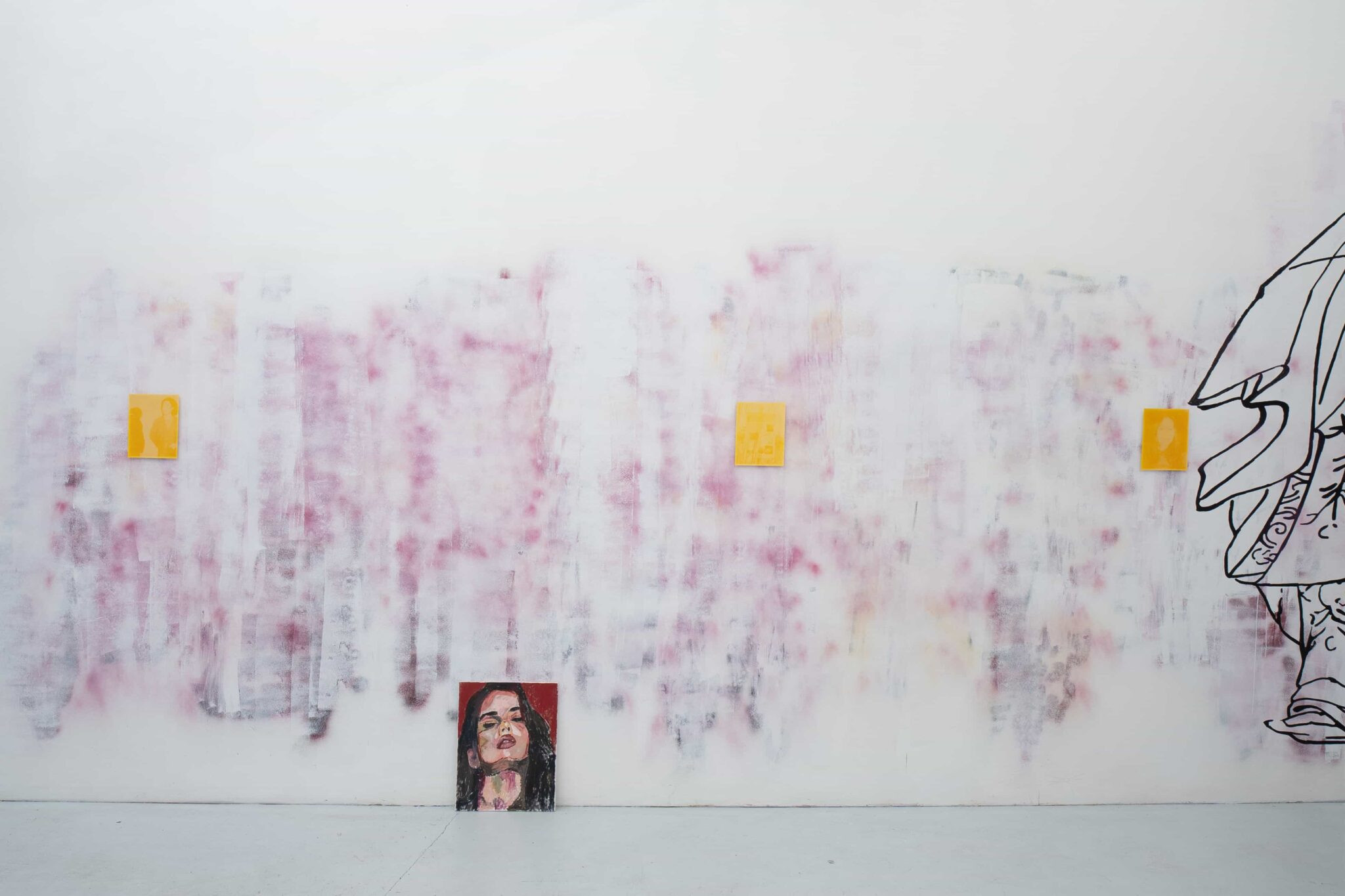 Another installation view showcasing the diverse artworks at the Climate Control exhibition.
Another installation view showcasing the diverse artworks at the Climate Control exhibition.
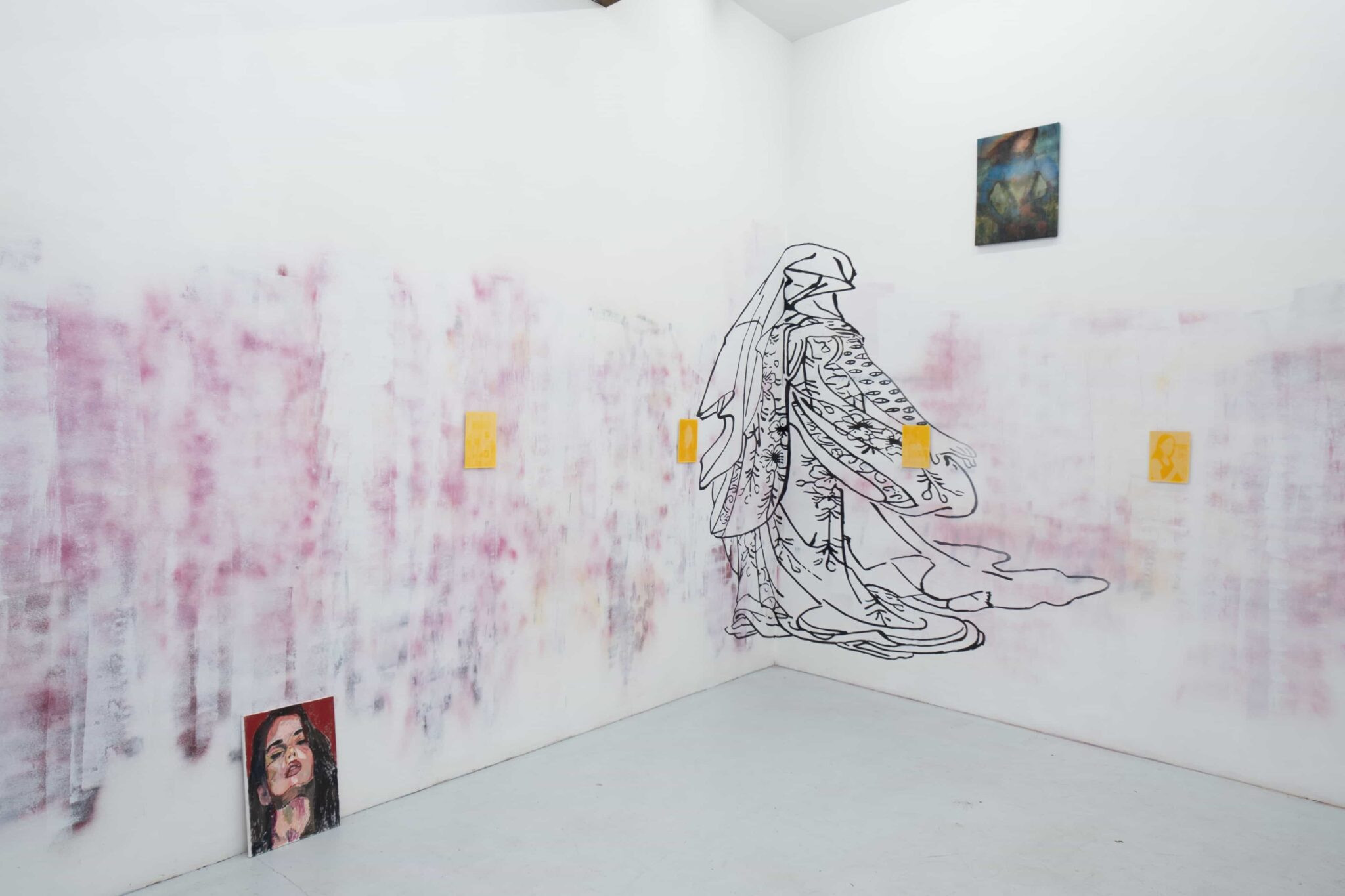 A wide installation view capturing the spatial arrangement of the artworks within the Climate Control exhibition.
A wide installation view capturing the spatial arrangement of the artworks within the Climate Control exhibition.
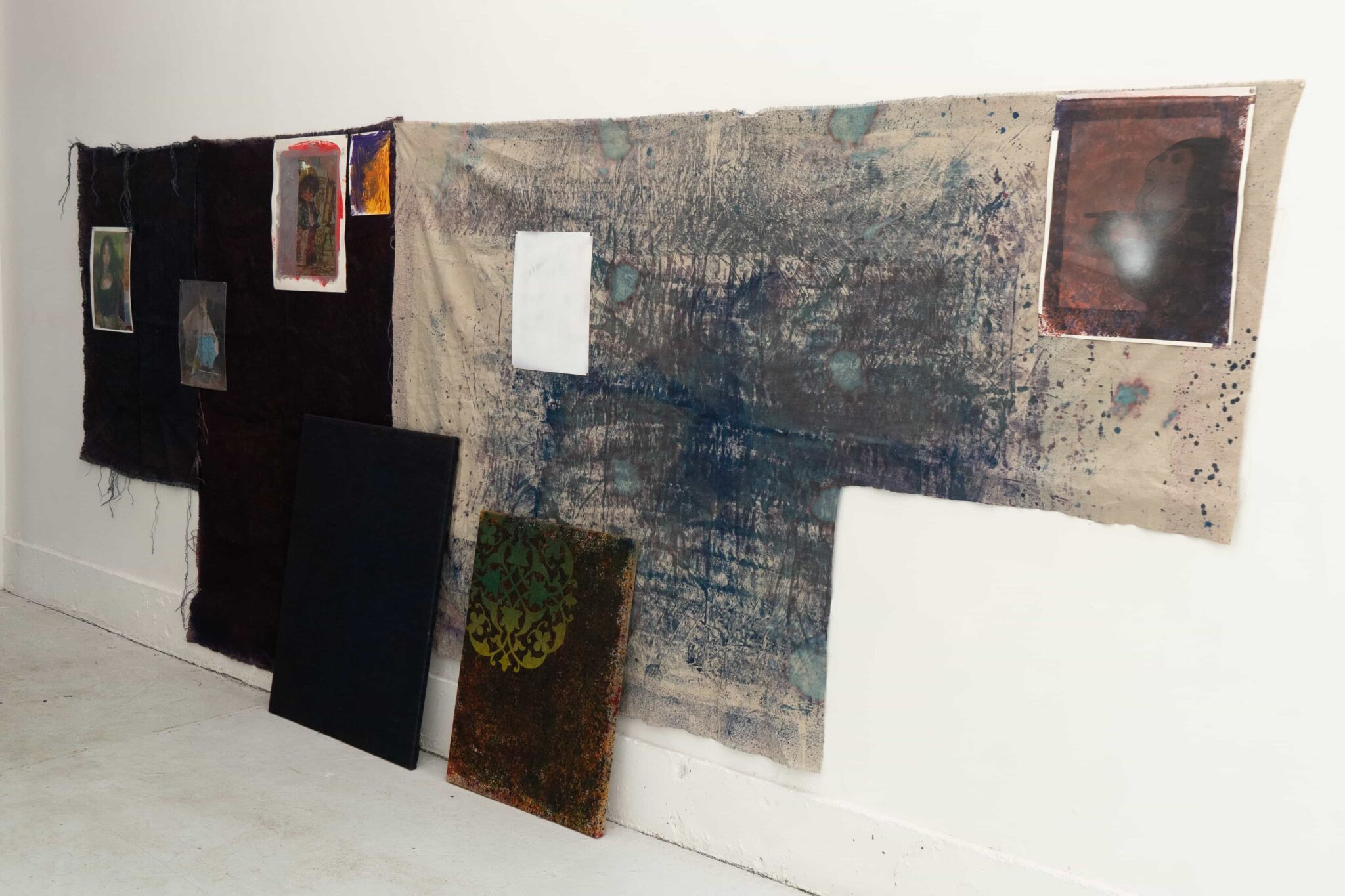 Close-up installation view highlighting the details and textures of the exhibited art pieces at Climate Control.
Close-up installation view highlighting the details and textures of the exhibited art pieces at Climate Control.
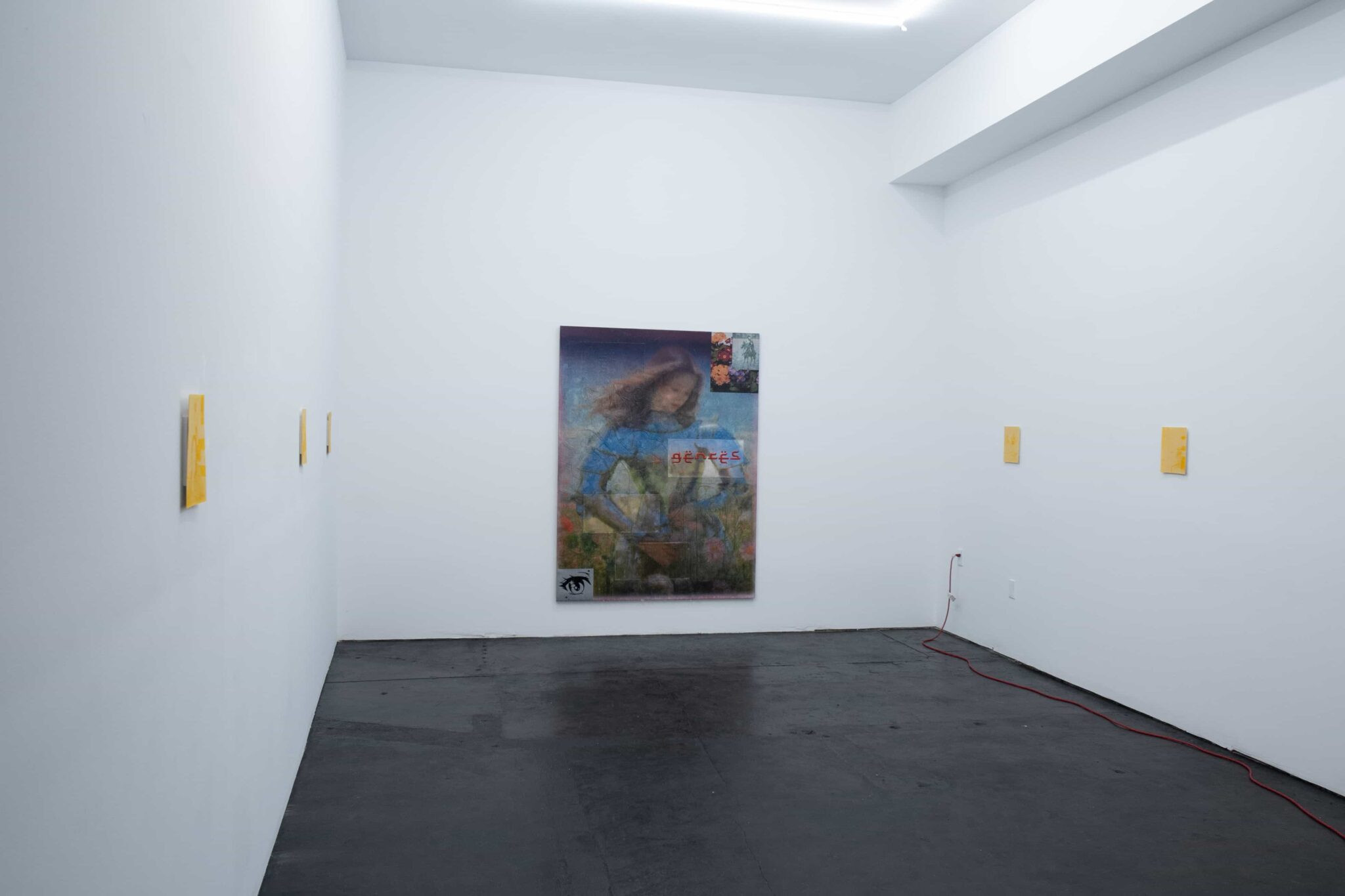 Installation perspective offering a unique angle on the artworks and exhibition space of Climate Control.
Installation perspective offering a unique angle on the artworks and exhibition space of Climate Control.
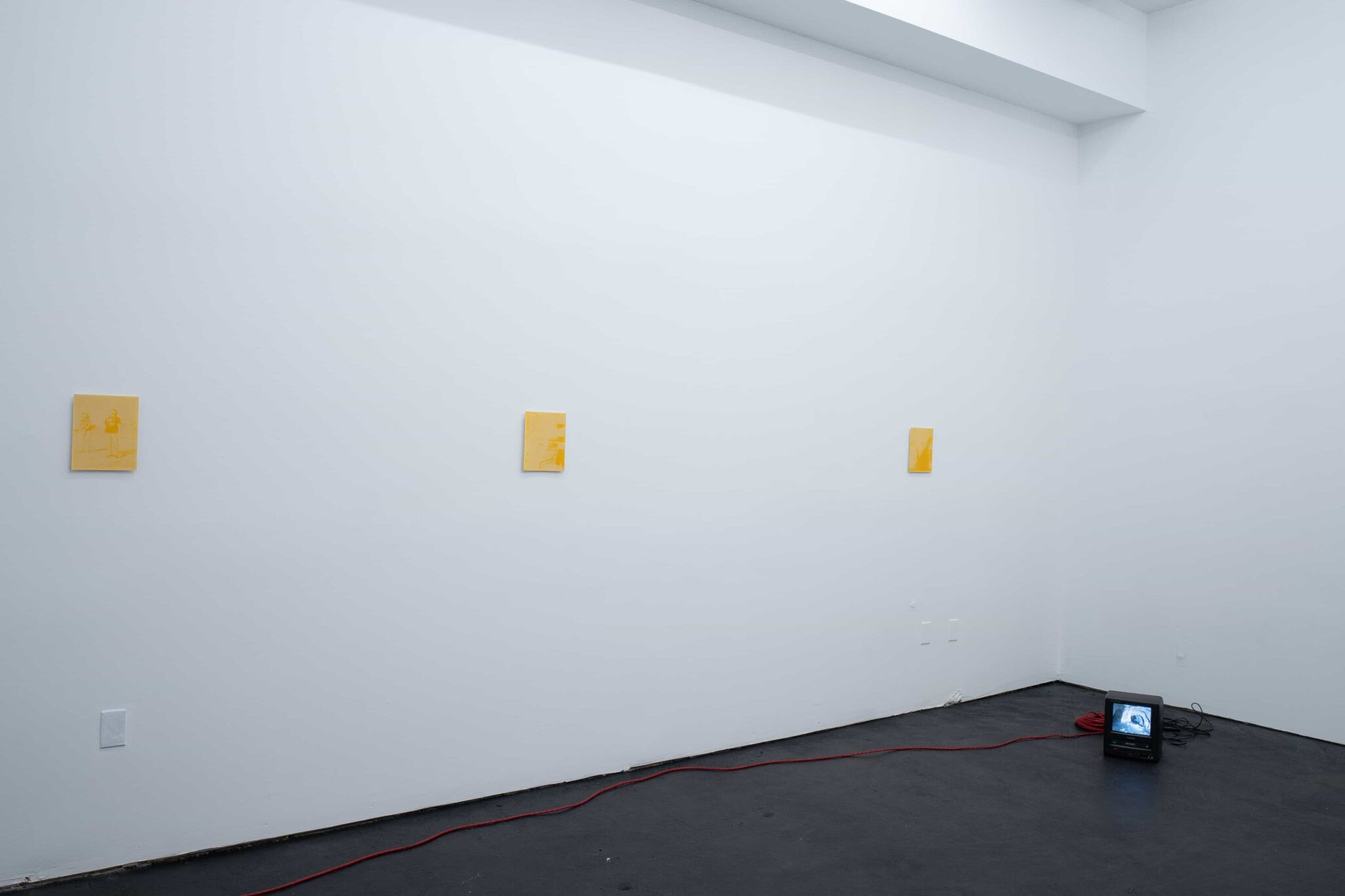 Detailed installation shot allowing viewers to appreciate the individual pieces within the Climate Control exhibition.
Detailed installation shot allowing viewers to appreciate the individual pieces within the Climate Control exhibition.
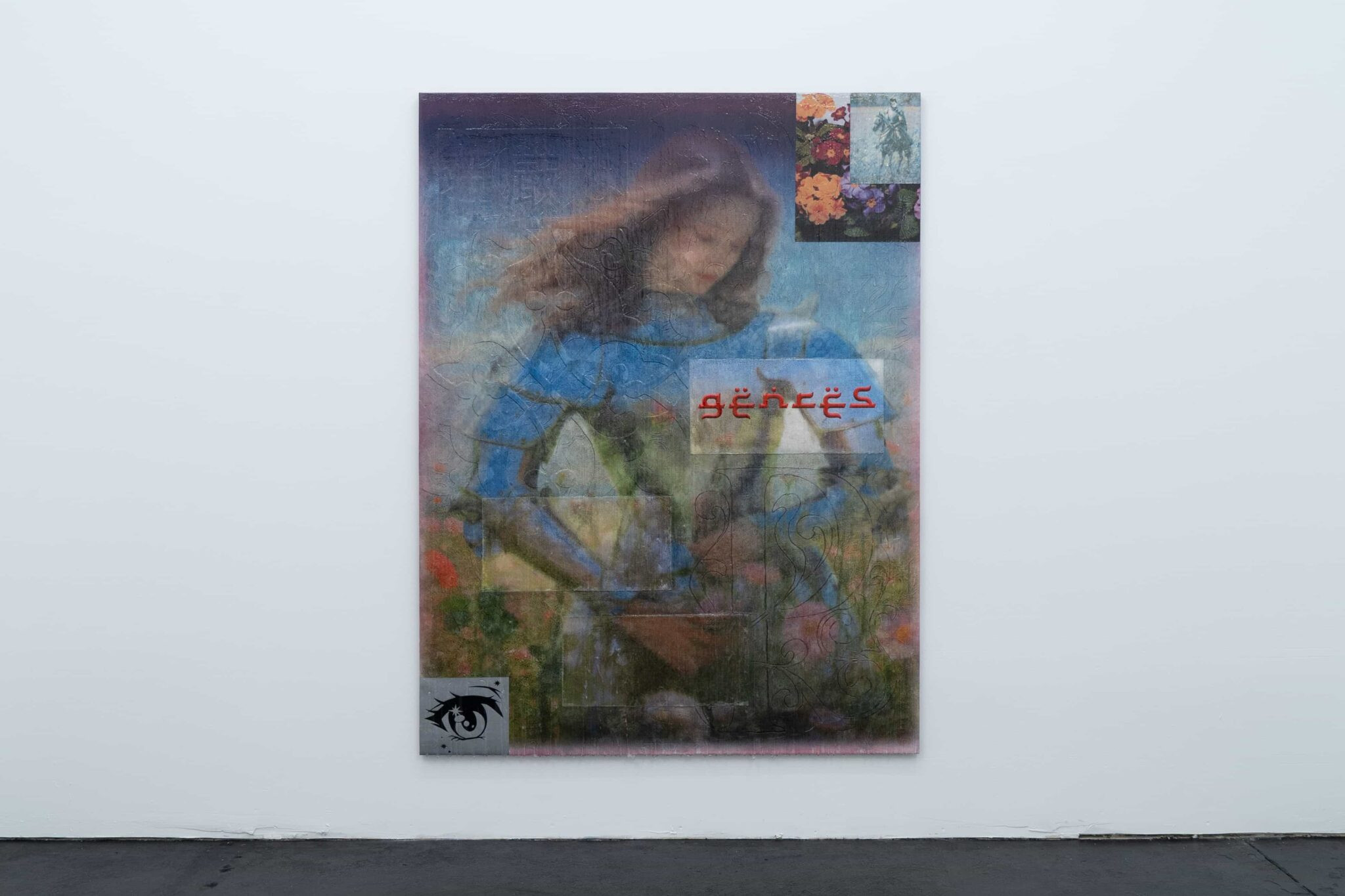 Parker Ito’s “the Pilgrim’s sticky toffee pudding gesamtkunstwerk, in the year of the dragon, a la mode, part 1,” a mixed media artwork featured in Climate Control.
Parker Ito’s “the Pilgrim’s sticky toffee pudding gesamtkunstwerk, in the year of the dragon, a la mode, part 1,” a mixed media artwork featured in Climate Control.
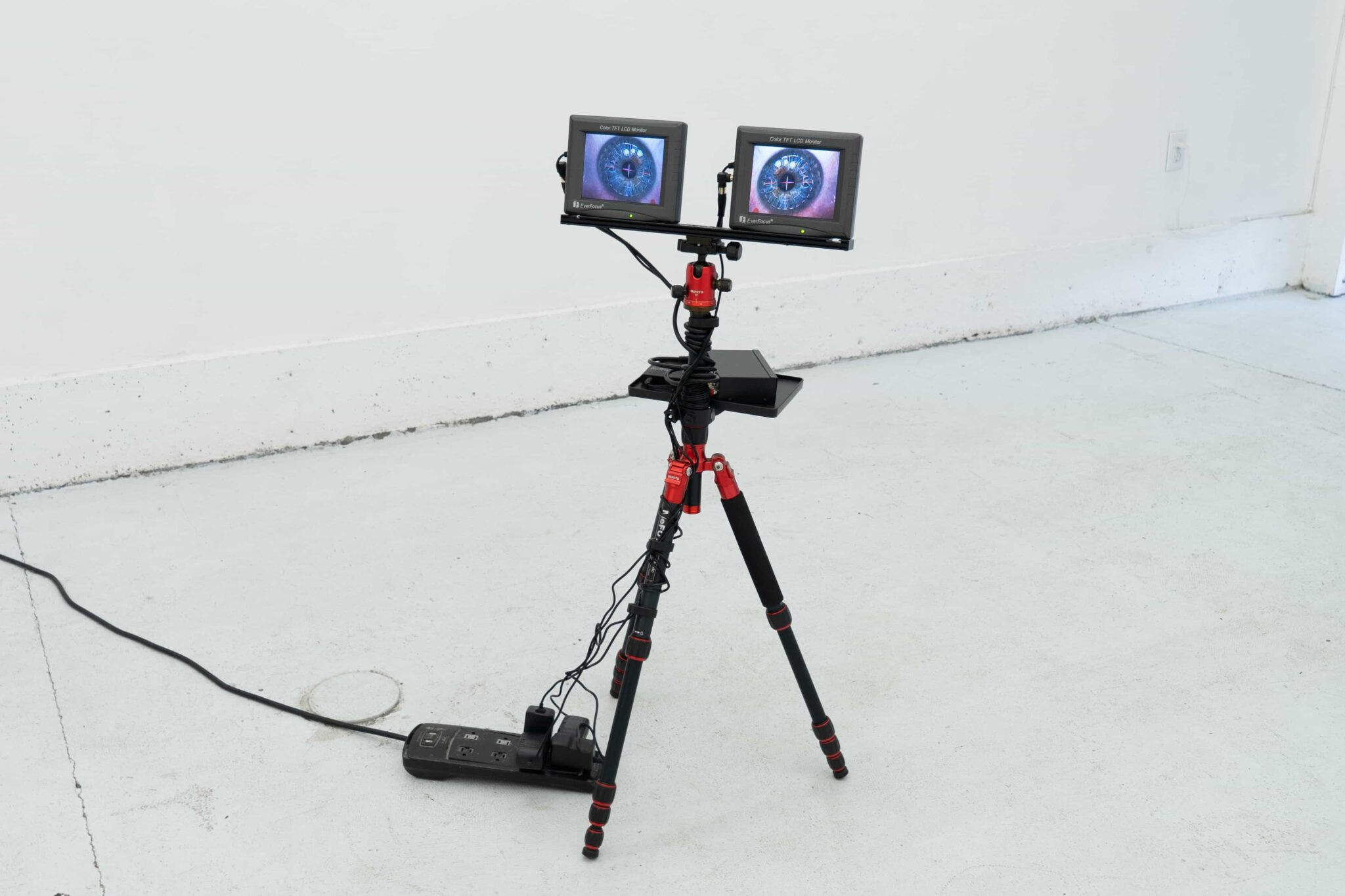 Parker Ito’s digital video installation “☉☉,” part of the Climate Control exhibition, showcasing modern media art.
Parker Ito’s digital video installation “☉☉,” part of the Climate Control exhibition, showcasing modern media art.
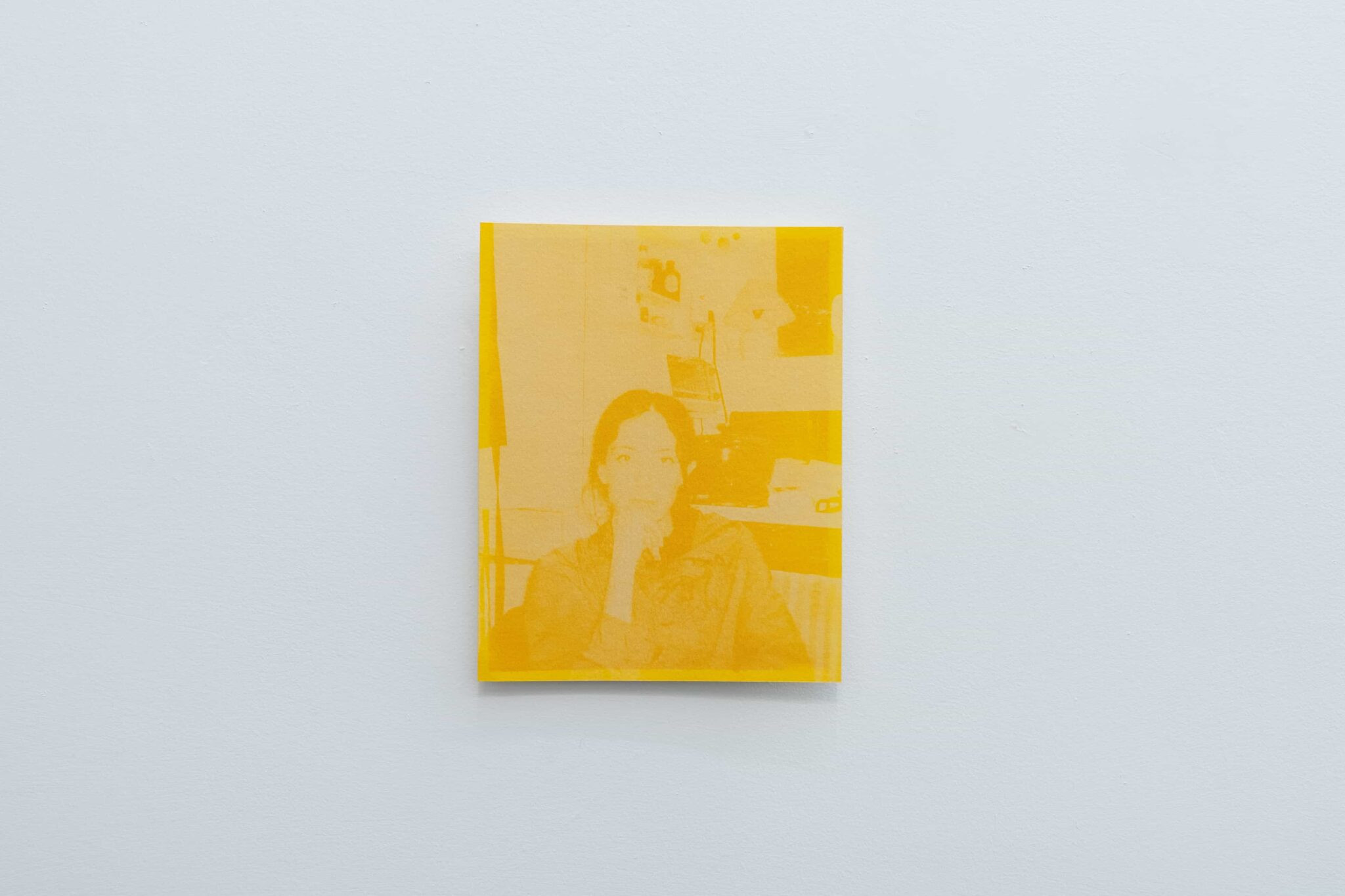 Juliana Halpert’s “Self-portrait in kitchen,” a turmeric anthotype print from the Climate Control exhibition, demonstrating unique printmaking techniques.
Juliana Halpert’s “Self-portrait in kitchen,” a turmeric anthotype print from the Climate Control exhibition, demonstrating unique printmaking techniques.
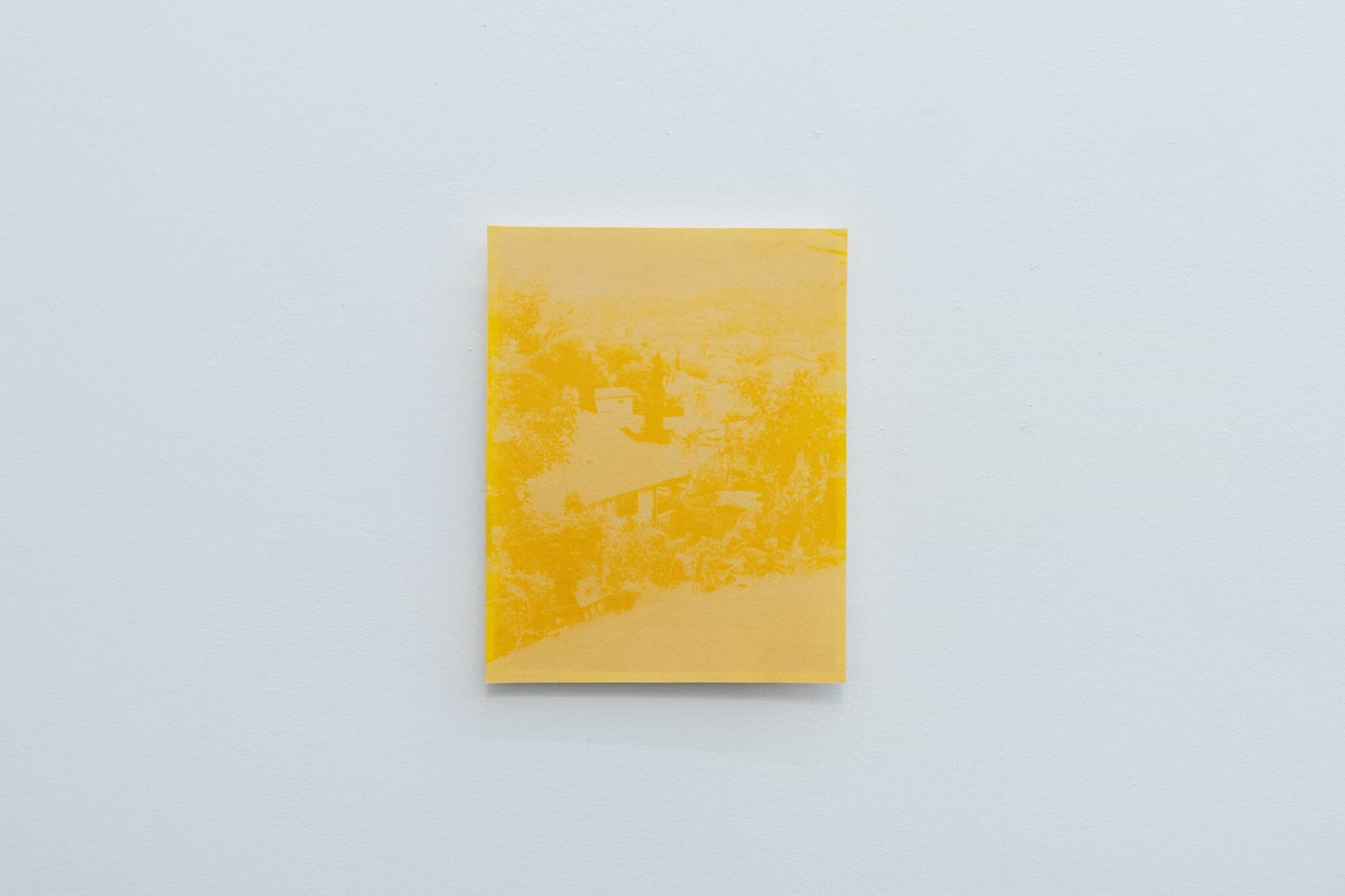 Juliana Halpert’s “Backyard,” another turmeric anthotype print displayed at Climate Control, highlighting natural and organic art processes.
Juliana Halpert’s “Backyard,” another turmeric anthotype print displayed at Climate Control, highlighting natural and organic art processes.
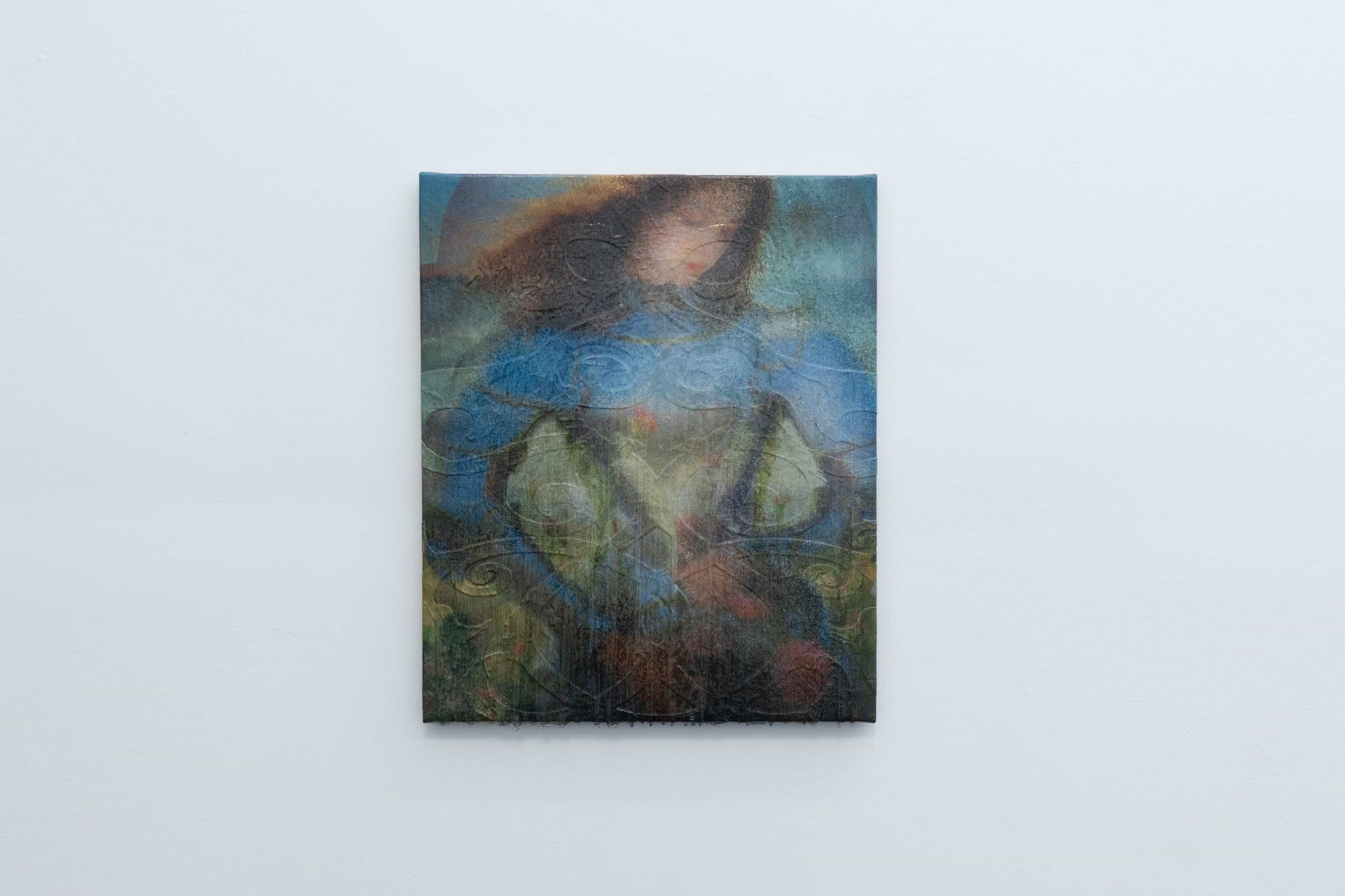 Parker Ito’s “visions of the Pilgrim’s Printer Progress from this world, to that which is to come (small knight),” a textured canvas piece from Climate Control.
Parker Ito’s “visions of the Pilgrim’s Printer Progress from this world, to that which is to come (small knight),” a textured canvas piece from Climate Control.
 Juliana Halpert’s “Old Dutch Cleanser Mine” digital video, a featured artwork in the Climate Control exhibition, exploring themes of space and discovery.
Juliana Halpert’s “Old Dutch Cleanser Mine” digital video, a featured artwork in the Climate Control exhibition, exploring themes of space and discovery.

